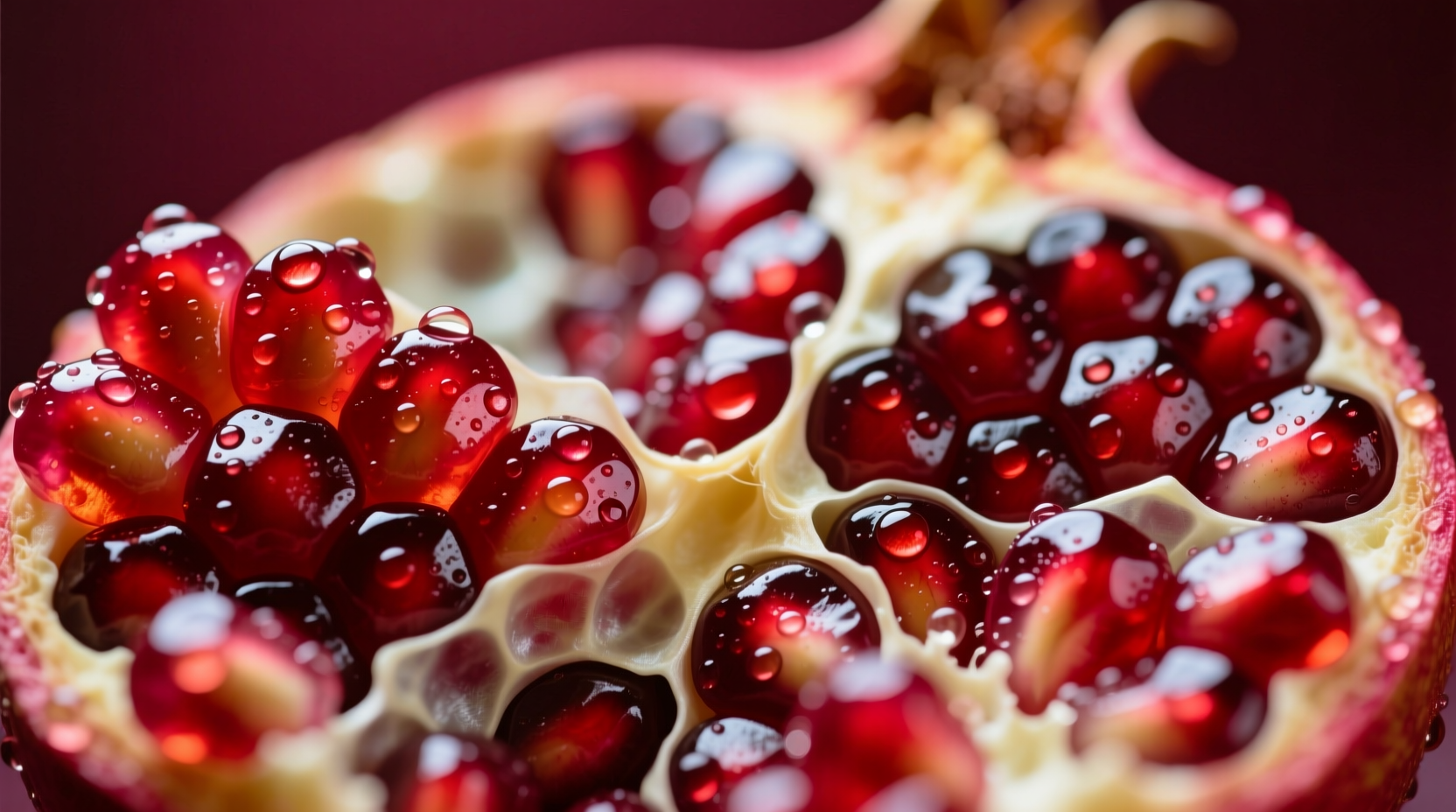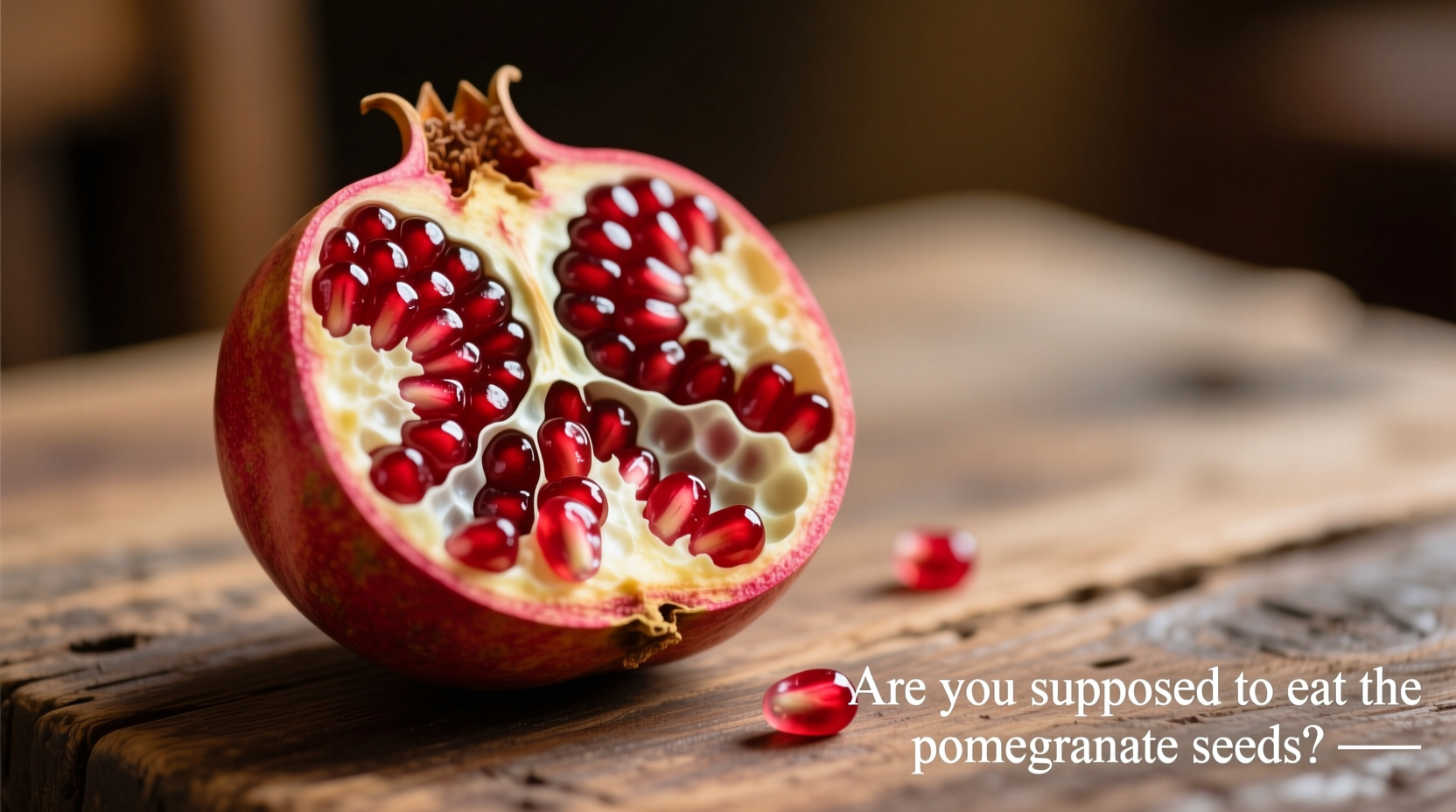Many people mistakenly treat pomegranate seeds like cherry pits or apple cores—discarding them as inedible. This confusion stems from unfamiliarity with how to properly consume this jewel-toned fruit. As a registered dietitian with culinary expertise, I've seen this misconception prevent countless people from accessing pomegranate's full nutritional profile.
Why Pomegranate Seeds Deserve Your Attention
Pomegranate seeds, technically called arils (the fleshy seed coverings), contain the fruit's edible portion. Unlike stone fruits where seeds are toxic, pomegranate seeds offer unique advantages:
- Fiber powerhouse: The crunchy seeds provide insoluble fiber crucial for digestive health
- Antioxidant delivery system: Polyphenols concentrate in both the juice sacs and seed membranes
- Complete nutrient package: Seeds contain healthy fats and additional micronutrients absent in juice alone
| Component | Nutritional Contribution | Edibility Status |
|---|---|---|
| Aril (juice sac) | Vitamin C, potassium, sugars | Fully edible |
| Seed membrane | Additional fiber, polyphenols | Fully edible |
| Inner seed | Healthy fats, additional fiber | Fully edible |
| White pith | Bitter compounds | Not recommended |
Science-Backed Benefits of Eating Whole Arils
Research from the National Institutes of Health confirms that consuming intact pomegranate arils (seeds included) delivers superior health benefits compared to juice alone. The seed membranes contain ellagitannins that convert to urolithin A in your gut—a compound shown to improve mitochondrial function.
A 2022 clinical trial published in Nutrients demonstrated that participants who consumed whole arils experienced 37% greater antioxidant absorption than those drinking processed juice. This occurs because the mechanical action of chewing releases bound nutrients otherwise lost during juicing.

Practical Consumption Guide
Here's how to maximize your pomegranate experience without the mess:
- Cutting technique: Score the crown end, then slice shallow vertical lines following internal sections
- Submersion method: Work underwater to prevent juice splatter while separating arils
- Chewing approach: Gently crush seeds to release nutrients while enjoying the satisfying crunch
- Digestion tip: For sensitive systems, start with small portions to assess tolerance
When to Exercise Caution
While pomegranate seeds pose minimal risk for most people, certain situations warrant attention:
- Individuals with diverticulitis should consult their physician, though recent research challenges the historical recommendation to avoid seeds
- Those on blood thinners like warfarin should maintain consistent consumption patterns (per Mayo Clinic guidance)
- People with severe nut allergies may want to test small amounts first due to potential cross-reactivity
Maximizing Culinary Applications
Professional chefs utilize whole pomegranate arils in diverse applications beyond simple snacking:
- Texture contrast: Sprinkle over roasted vegetables or grain bowls
- Flavor balancing: Pair with rich meats like duck or lamb
- Breakfast enhancement: Mix into yogurt or oatmeal for added crunch
- Cocktail garnish: Float in champagne or mix into mocktails
For optimal freshness, store separated arils in an airtight container for up to five days. Freezing preserves them for up to six months—simply spread on a baking sheet before transferring to freezer bags.
Debunking Common Myths
Let's address persistent misconceptions about pomegranate seeds:
- Myth: Seeds cause appendicitis – Fact: No scientific evidence supports this claim
- Myth: Only the juice has benefits – Fact: Seeds contain additional fiber and healthy fats
- Myth: They're difficult to digest – Fact: Most people digest them without issues
According to USDA nutritional data, one cup of pomegranate arils (including seeds) provides 7 grams of fiber—nearly 25% of your daily requirement. This makes them significantly more nutritious than processed juice, which loses most fiber during extraction.
Your Action Plan for Pomegranate Success
Start incorporating pomegranate seeds into your diet with these practical steps:
- Purchase fruits with firm, unblemished skins that feel heavy for their size
- Use the underwater separation method for mess-free harvesting
- Begin with 1/4 cup portions to assess digestive tolerance
- Combine with healthy fats like avocado to boost nutrient absorption
- Track how you feel in a food journal for the first week of consumption











 浙公网安备
33010002000092号
浙公网安备
33010002000092号 浙B2-20120091-4
浙B2-20120091-4